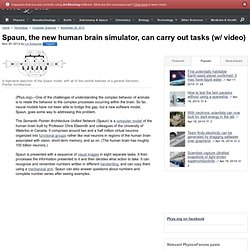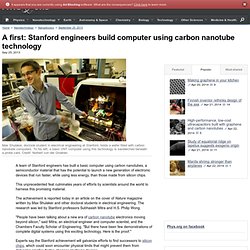

Distributed Networking. VIAAC DARMA ARCHITECTURE. Energy scheduling, example natural language algorithm Requests (req)s enter a. Bayesian inference. Delphi method. The Delphi method (/ˈdɛlfaɪ/ DEL-fy) is a structured communication technique, originally developed as a systematic, interactive forecasting method which relies on a panel of experts.[1][2][3][4] The experts answer questionnaires in two or more rounds. After each round, a facilitator provides an anonymous summary of the experts’ forecasts from the previous round as well as the reasons they provided for their judgments. Thus, experts are encouraged to revise their earlier answers in light of the replies of other members of their panel. It is believed that during this process the range of the answers will decrease and the group will converge towards the "correct" answer.
Finally, the process is stopped after a pre-defined stop criterion (e.g. number of rounds, achievement of consensus, stability of results) and the mean or median scores of the final rounds determine the results.[5] History[edit] The name "Delphi" derives from the Oracle of Delphi. Key characteristics[edit] Applications[edit] Network theory. A small example network with eight vertices and ten edges.

It has applications in many disciplines including statistical physics, particle physics, computer science, electrical engineering, biology, economics, operations research, and sociology. Applications of network theory include logistical networks, the World Wide Web, Internet, gene regulatory networks, metabolic networks, social networks, epistemological networks, etc; see List of network theory topics for more examples. Euler's solution of the Seven Bridges of Königsberg problem is considered to be the first true proof in the theory of networks.[1] Network optimization[edit] Network analysis[edit] Social network analysis[edit] Visualization of social network analysis.[2]
Facebook's '3.74 degrees of separation' is a world away from being significant. This week Facebook announced that there are on average just 3.74 intermediate friends separating one user from another.

They then stood back and waited for us all to be duly amazed. Well, let's throw some numbers at the Facebook wall and see what sticks. Spime. Spime is a neologism for a currently theoretical object that can be tracked through space and time throughout its lifetime.

The name "spime" for this concept was coined by author Bruce Sterling. Sterling sees spimes as coming through the convergence of six emerging technologies, related to both the manufacturing process for consumer goods, and through identification and location technologies.* "Spime" was probably first used in a large public forum by Sterling at SIGGRAPH Los Angeles, August 2004.
The idea was further expanded upon in Shaping Things. Internet of Things. The Internet of Things (IoT) is the network of physical objects or "things" embedded with electronics, software, sensors and connectivity to enable it to achieve greater value and service by exchanging data with the manufacturer, operator and/or other connected devices.

Each thing is uniquely identifiable through its embedded computing system but is able to interoperate within the existing Internet infrastructure. The term “Internet of Things” was first documented by a British visionary, Kevin Ashton, in 1999.[1] Typically, IoT is expected to offer advanced connectivity of devices, systems, and services that goes beyond machine-to-machine communications (M2M) and covers a variety of protocols, domains, and applications.[2] The interconnection of these embedded devices (including smart objects), is expected to usher in automation in nearly all fields, while also enabling advanced applications like a Smart Grid.[3] Early history[edit] In its original interpretation,[when?] Media[edit] UrbiForge Main/Home Page. The Internet of Things is Here. Publishers Release Unfinished Aaron Swartz Manuscript. Cory Doctorow of Boing Boing reports that Morgan & Claypool Publishers have decided to release an unfinished manuscript written by Aaron Swartz entitled A Programmable Web.

Michael B. Swarm Theory. Entity Search: The Future of Search. Spaun, the new human brain simulator, can carry out tasks (w/ video) (Phys.org)—One of the challenges of understanding the complex behavior of animals is to relate the behavior to the complex processes occurring within the brain.

Neuromorphic chips could help reverse-engineer the human brain. Researchers at the University of Zurich and ETH Zurich have designed a sophisticated computer system that is comparable in size, speed and energy consumption to the human brain.

Based on the development of neuromorphic microchips that mimic the properties of biological neurons, the research is seen as an important step in understanding how the human brain processes information and opens the door to fast, extremely low-power electronic systems that can assimilate sensory input and perform user-defined tasks in real time. Neuromorphic engineering The human brain is a remarkable machine: with a power consumption of only about 20 W, it can outclass the fastest supercomputer in most real-world tasks – particularly those involving the processing of sensory input.
Researchers believe that the brain's astounding abilities aren't down to mere processing speed, but rather to the highly efficient way in which it elaborates information. Soft state machines. A first: Stanford engineers build computer using carbon nanotube technology. A team of Stanford engineers has built a basic computer using carbon nanotubes, a semiconductor material that has the potential to launch a new generation of electronic devices that run faster, while using less energy, than those made from silicon chips.

This unprecedented feat culminates years of efforts by scientists around the world to harness this promising material. The achievement is reported today in an article on the cover of Nature magazine written by Max Shulaker and other doctoral students in electrical engineering. The research was led by Stanford professors Subhasish Mitra and H.S.